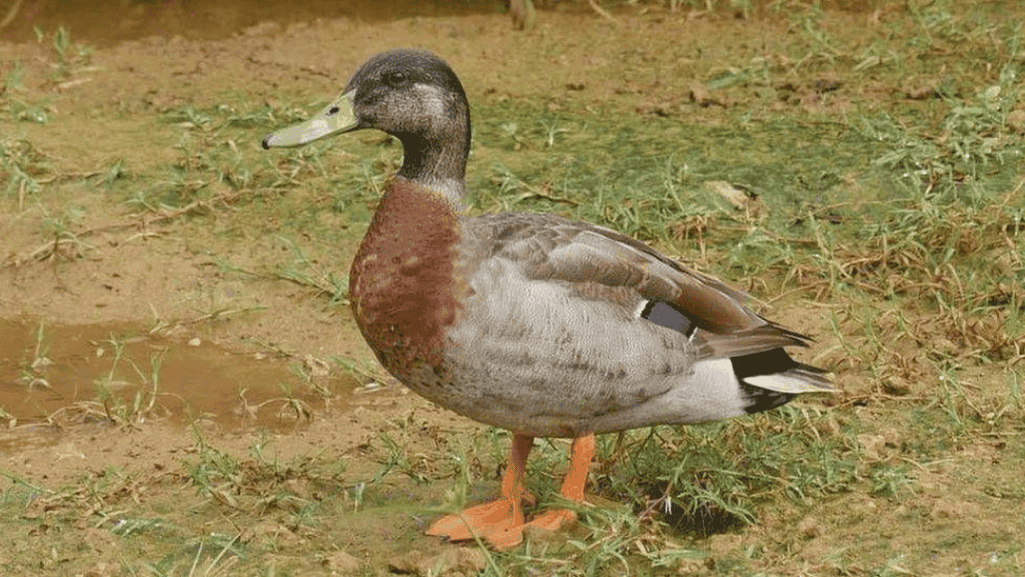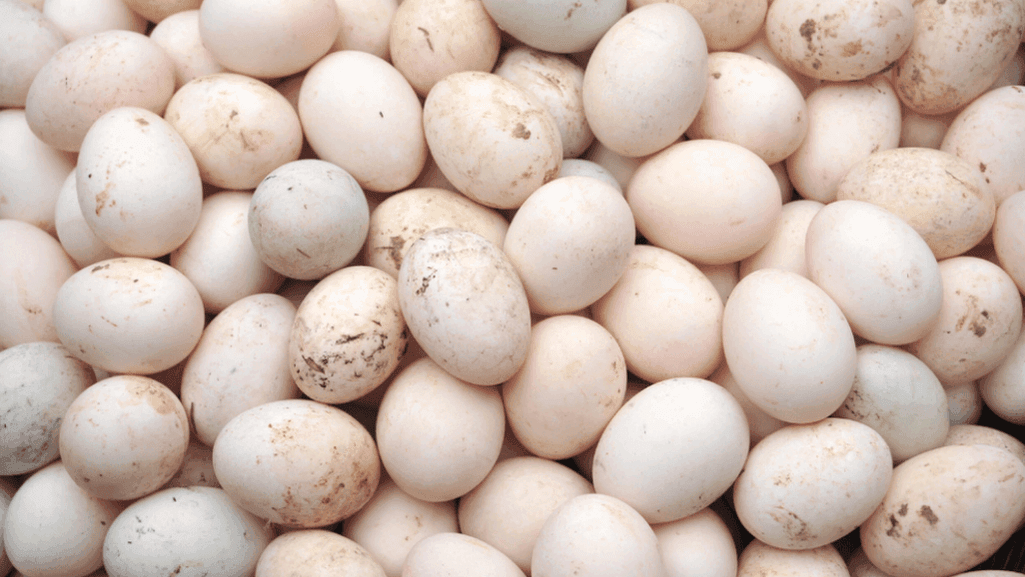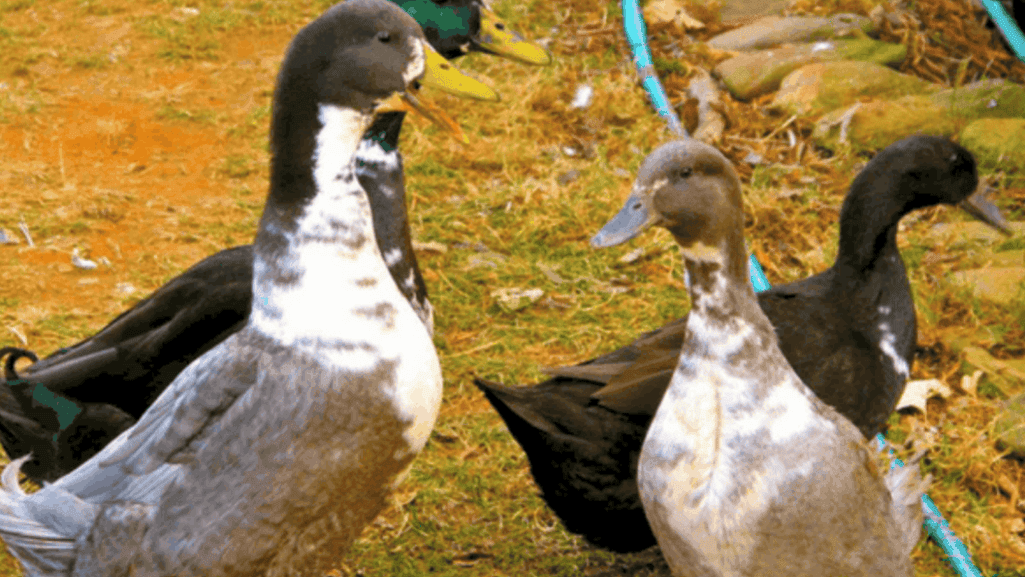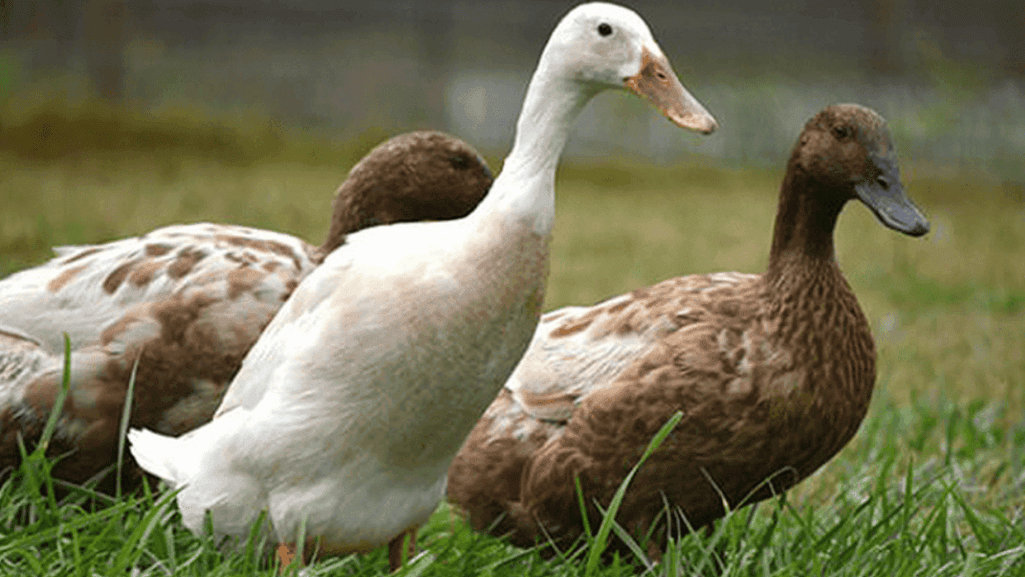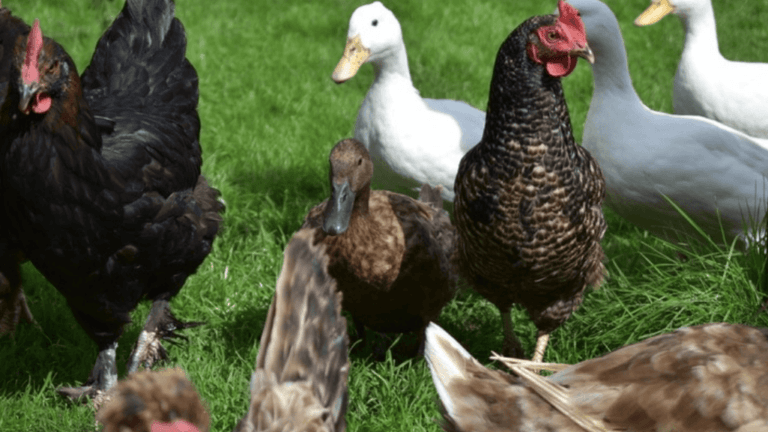Starting a backyard egg production journey needs passion and knowledge. This guide is your key to understanding duck egg breeds. It highlights the best varieties for laying, each with special traits to boost your flock’s output.
Learn about the famous Khaki Campbell for their high egg production. Also, discover the beauty of Cayuga and Runner ducks for their colorful eggs. This guide will help you master raising ducks for eggs and meet the needs of different duck egg laying breeds. Start your backyard adventure with the knowledge from this duck egg laying breeds guide.
Key Takeaways
- Boost backyard egg production by picking high-yielding breeds like Khaki Campbell ducks.
- Add variety with unique duck egg breeds for different egg colors.
- Find the right balance of nutrition, space, and care for the best egg production.
- Help conservation by choosing endangered breeds like Saxony ducks.
- Learn about heavyweight ducks, like Muscovy, and their role in your flock.
- See the wide range of egg production rates, from White Layer ducks to Welsh Harlequin.
- Consider a mixed-breed flock for better resilience and productivity.
Introduction to Duck Egg Breeding
Duck egg breeding is a big deal in agriculture. It’s both a passion and a smart business move. When picking duck breeds for egg farming, the right choice is key. Different domestic duck breeds for egg production fit various settings, offering many options for farms.
Knowing how duck eggs develop is important. First, an embryo grows inside (internal pip). It can wait up to 12 hours before breaking out (external pip). This usually happens in 12-24 hours. Then, the duckling fully emerges, called zipping, which can take up to two hours.
After hatching, ducklings need careful care. They need the right space and temperature. Start at 95°F (35°C) and lower it slowly. They also need water for their bills, but not too much. Special waterers help with this.
Here’s a look at the egg yield of popular breeds for duck egg breeding:
| Breed | Yearly Egg Production | Incubation Temperature (°F) | Flock Expansion Capability |
|---|---|---|---|
| Khaki Campbell | 250-340 eggs | 99.5 | Poor to Fair |
| Welsh Harlequin | 240-330 eggs | 99.5 | Poor to Good |
| Buff Orpington | 150-250 eggs | 99.5 | Fair to Good |
| Cayuga | 100-150 eggs | 99.5 | Poor to Fair |
With the right care, breeds like Khaki Campbell or Welsh Harlequin can do well. This makes raising ducks for eggs a rewarding activity. For more info, check out Ducks New World on duck conservation and breeding.
Top Duck Egg Breeds for Maximum Yield
Looking for duck breeds that lay a lot of eggs? It’s important to know what makes each breed special. Some duck breeds are known for laying a lot of eggs and doing well in different conditions.
Let’s look at the best duck breeds for eggs. We’ll focus on breeds that lay a lot and are easy to care for. Their eggs are great for cooking and ensure a steady supply, which is key for small farmers and hobbyists.
Khaki Campbell Ducks: Prolific Layers
Khaki Campbell ducks are famous for laying a lot of eggs. They can lay up to 340 white eggs a year. This is more than many chickens, and they keep laying even when it’s cold.
Indian Runner Ducks: The Agile Egg Producers
Indian Runner ducks are known for their unique way of standing and their energy. They lay around 300 eggs a year, depending on how well they’re cared for. Their eggs are green or blue, adding a fun touch without losing flavor or quality.
Silver Appleyard Ducks
Silver Appleyard ducks are loved for their looks and steady egg-laying. They lay about 220 to 265 eggs a year. They’re a good choice for those who want reliable eggs and a beautiful flock.
Welsh Harlequin Ducks
Welsh Harlequin ducks are famous for their beautiful feathers and calm nature. They lay around 240 to 330 eggs a year. They’re hardy and keep laying even when things get tough.
When comparing duck breeds for egg production, it’s clear these breeds are top-notch. They lay a lot of eggs all year round. This makes them very valuable for sustainable egg farming.
| Breed | Annual Egg Production | Egg Color |
|---|---|---|
| Khaki Campbell | 250 – 340 eggs | White |
| Indian Runner | Approx. 300 eggs | Green/Blue |
| Silver Appleyard | 220 – 265 eggs | Varies |
| Welsh Harlequin | 240 – 330 eggs | White – Light Brown |
Duck Egg Breeds with Unique Egg Coloring
Duck lovers and backyard farmers look for duck breeds with high egg yield and unique egg coloring. The beauty of colorful eggs in your basket is unmatched. Let’s look at some unique egg coloring ducks that make your eggs stand out and lay lots of eggs.
Cayuga Ducks: Distinctive Gray Eggs
Cayuga ducks are known for their gray to black eggs. They are an American breed that adds drama to your eggs. These hens are good layers and do well in many places.
Runner Ducks: Vibrant Green Egg Layers
Runner ducks are famous for their upright walk and fun nature. They lay eggs in shades of green, making them a top choice for green egg laying ducks. Their high egg yield makes them very popular.
Mallard Ducks: Producing a Rainbow of Egg Hues
Mallard ducks are known for their colorful eggs. About 70% of their eggs are green, making them a hit for green egg laying ducks. They are well-suited to local conditions and are a strong choice for egg layers.
Whether you prefer the gray eggs of Cayuga ducks or the green eggs of Runner and Mallard ducks, adding these to your flock is a win-win. They not only lay a lot of eggs but also add color to every harvest.
Tips for Raising Ducks for Eggs
Raising ducks for eggs can be very rewarding. To succeed, you need to understand how to care for them and create the best environment. This will help them grow and produce eggs well.
Ducklings need a warm, clean place to start. Keep the temperature between 84-90°F for the first week. Then, slowly lower it until they don’t need it anymore, usually by their fourth week. Clean their area often, especially because they love to splash in water.
It’s also important to have a safe place for them. Use hardware cloth and a solid base to keep predators out. Make sure their outdoor area is safe from wild birds to avoid diseases.
- Ducks can start laying eggs at about 20 weeks.
- Give them at least 17 hours of light a day to help them lay more eggs.
- Make sure they always have clean, fresh water.
Ducks love to forage for food. Letting them roam can make their diet better and keep their area clean. They hunt for worms and mosquito larvae, which helps your backyard ecosystem.
Remember, every duck is different. Jill, a duck cared for by an expert, laid an egg every day for two years. This shows how important it is to meet their specific needs.
Learning how to care for ducks well makes their lives better. It also makes your egg production venture rewarding for both you and your ducks.
Duck Breeds for Every Backyard Farmer
Looking for backyard duck breeds for eggs or growing your farm? The right breeds are key. Magpie and Buff ducks show how space and foraging skills impact egg production.
Ancona and Buff Ducks: Small Space Efficiency
Ancona and Buff ducks are great for small backyards. They’re compact, easy to manage, and lay lots of eggs. Ancona ducks have beautiful mottled feathers, adding charm to any small pond or garden.
Magpie Ducks: The Foraging Specialists
Magpie ducks are perfect for saving on feed costs. They’re great foragers, hunting pests and weeds. Their black and white feathers also add beauty to your space.
| Breed | Eggs Per Week | Annual Egg Count |
|---|---|---|
| Ancona | 4-5 | 200-260 |
| Buff | 3-5 | 150-250 |
| Magpie | 4-5 | 200-260 |
Choosing breeds like Ancona, Buff, and Magpie changes your backyard and egg production. They show how different traits meet various needs. With the right breeds, your backyard can become a productive egg farm.
Caring for Your Egg-Laying Duck Breed
Successful caring for laying ducks starts with knowing their dietary and safety needs. This knowledge helps keep them healthy and boosts their egg production. We’ll look at nutrition for egg-laying ducks and safety in duck breeding to help your ducks thrive.
Nutrition and Feeding for Optimal Egg Production
Nutrition is key for egg-laying ducks’ health and productivity. A balanced diet helps them lay eggs regularly and stay healthy. For example, Indian Runner ducks need a lot of protein and calcium to lay 150-200 eggs a year.
- Layer Feed: It’s crucial for their high calcium and protein needs. Start using layer feed when ducks like Indian Runners begin laying, around 6 months.
- Supplementary Calcium: Adding oyster shell or limestone to their regular feed helps prevent eggshell problems. This is important for the health of their large, 2.5 oz duck eggs.
- Foraging and Feed Reduction: In warmer months, letting ducks forage can reduce their feed needs. This cuts costs and boosts their health as they eat naturally.
Safety and Shelter Considerations for Ducks
The environment where ducks live greatly affects their health and productivity. Keeping them safe from predators and harsh weather is key for safety in duck breeding. A secure shelter and safe breeding practices reduce stress, which improves their health and egg-laying.
Maintaining a clean and well-managed shelter is vital for the ducks’ hygiene and health. It helps prevent diseases.
| Breed | Average Annual Egg Count | Egg Weight | Start Laying |
|---|---|---|---|
| Indian Runner | 150-200 | 2.5 oz | 6 months |
| Khaki Campbell | 200-300 | 2.5 oz | 5-7 months |
| Silver Appleyard | 100 | 2.7 oz | 7-8 months |
Understanding the needs of caring for laying ducks and using the right nutrition and safety measures can greatly improve their health and egg production. Regular checks and adjustments based on the season and individual health are crucial for a great breeding environment.
Rare and Heritage Duck Egg Breeds
Exploring rare duck egg breeds and heritage duck breeds for eggs offers tasty and healthy eggs. It also helps save important species. Keeping these breeds alive is crucial for small farmers and duck lovers.
Saxony Ducks: Preserving the Endangered
Saxony ducks are key in saving heritage breeds. They come from Germany and lay big white eggs. Each hen lays about 190 to 240 eggs a year.
These ducks are known for their looks and calm nature. They show how some breeds can survive and thrive. This makes them popular for helping endangered breeds.
Aylesbury and Dutch Hookbill Ducks: Rare Finds
The Aylesbury and Dutch Hookbill ducks are very rare. The Aylesbury is famous for its meat and looks. It lays fewer eggs, but its quality is high.
The Dutch Hookbill is special for its curved beak. It lays about 100 to 150 eggs a year. It’s also important for raising awareness about rare breeds.
| Breed | Average Weight | Average Annual Egg Production |
|---|---|---|
| Saxony | 7-8 lbs | 190-240 eggs |
| Aylesbury | 10 lbs | 35-125 eggs |
| Dutch Hookbill | 4-5 lbs | 100-150 eggs |
In summary, heritage duck breeds for eggs like Saxony, Aylesbury, and Dutch Hookbill are vital. They keep our farms diverse and connect us to the past. Their survival asks us to think about our impact on animals and the environment.
Duck Breed Comparison for Egg Production
Ducks come in many shapes and sizes, and their egg-laying abilities vary a lot. We’ll look at the duck egg production comparison. We’ll focus on the top egg-laying duck breeds and their special traits and mothering abilities of ducks.
Egg Size and Production Rates among Top Breeds
Different duck breeds lay eggs of different sizes and at different rates. The Indian Runner is known for laying a lot of eggs, up to 300 a year. They also lay big eggs. On the other hand, the Aylesbury breed lays fewer eggs, between 35 and 125 a year. Knowing these differences is key when choosing a breed.
| Breed | Annual Egg Production | Egg Size |
|---|---|---|
| Indian Runner | 300 eggs | Large |
| Khaki Campbell | 250-340 eggs | Medium |
| Welsh Harlequin | 240-330 eggs | Medium |
| Silver Appleyard | 200-270 eggs | Medium-Large |
| Aylesbury | 35-125 eggs | Medium |
Temperament and Mothering Abilities of Ducks
Ducks have different mothering abilities. Some breeds, like the Mallard and Welsh Harlequin, are great at taking care of their ducklings. They are protective and brood well. Other breeds, like the Indian Runner, focus more on laying eggs and might need more help from humans.
For more on duck breeding and egg production, check out the Ducks New World’s privacy policy. It talks about data collection and how it affects breeding and duck welfare.
This guide helps duck breeders and fans. It’s useful whether you want to increase egg production or improve mothering in your flock. Picking the right breed can make duck-keeping rewarding and successful.
The Beauty and Benefits of a Mixed-Breed Flock
Having a mixed-breed duck flock in your backyard makes it look better and work better. It combines the strong points of dual-purpose duck breeds for eggs and meat. It also brings in other ducks that add beauty and special traits.
Adding duck breeds for backyard farming is more than just colors and egg sizes. It makes a strong system where all ducks help each other. Some ducks are great at finding food, and others lay lots of eggs.
Introducing dual-purpose ducks, known for their higher yield in meat and eggs, ensures that your backyard farm isn’t just vibrant, but also functional.
- Ducks like Silver Appleyards are good for both eggs and meat. They lay up to 260 large eggs a year and give tasty meat.
- Decorative breeds make your farm look great. They also help attract visitors if you have a farm tour.
A mixed-breed duck flock helps your farm in many ways. By picking breeds that work well together, you create a helpful community. Ducks that can take care of eggs help you, and those that forage keep the land clean.
- Choose breeds that can handle cold well. This is key for a healthy flock all year.
- Think about how they eat and how much space they need. This helps your flock do well without fighting for food or space.
In conclusion, a lively backyard duck farming setup with a mixed-breed flock is beautiful and productive. The mix of dual-purpose and special ducks makes your farm dynamic and successful.
Duck Egg Breeds
Choosing the top duck breeds for producing eggs is key. Khaki Campbell and Runner ducks stand out. They are great for both big farms and small backyard flocks.
Khaki Campbell Ducks: Consistent Egg Laying Champion
Khaki Campbell ducks are known for laying lots of eggs. They can lay between 165 to 240 eggs a year. Their eggs are fertile 87% of the time.
They lay eggs well even when it’s cold. This makes them a top choice for egg production.
Explore Runner Duck Varieties: High Yield with a Side of Color
Runner ducks, especially the Indian Runner variety, lay about 300 eggs a year. They lay eggs in white, buff, black, and chocolate. This makes them both productive and colorful.
They are a great choice for those who want to increase egg production and add color to their coop.
For more information on duck breeds and egg laying, visit Ducks New World. They have lots of info on different breeds and how to care for them.
| Breed | Average Annual Egg Production | Fertility Rate (%) |
|---|---|---|
| Khaki Campbell Ducks | 165 – 240 | 87 |
| Indian Runner Ducks | 300 | Efficient but varies |
Conclusion
Choosing the best duck breeds for homesteading or egg business is a big decision. It’s about living a certain way and making a living. Knowing how long ducks live, when they start laying eggs, and how long they keep laying is key.
Some breeds, like the Khaki Campbell, lay up to 325 eggs a year. Others, like Indian Runners and Welsh Harlequins, lay eggs for 3 to 5 years. These ducks are true assets to any farm.
For those looking for something special, Cayuga and Runner ducks are great. They’re not just good for eggs; they’re also beautiful. Magpie Ducks are great foragers, and Silver Appleyards lay big, impressive eggs.
Understanding each breed’s strengths is crucial. Whether you’re starting a farm or an egg business, the possibilities are endless. With the right knowledge, you can find happiness and success in your endeavors.



